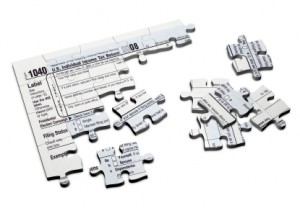December 16, 2016
 The National Pension System (NPS), introduced by the Indian government in the year 2004 is mandatory for all government employees except the armed forces personnel.This scheme was extended to the private sector in 2009. It is a portable retirement savings account, which can be efficiently used to provide financial security to senior’s through a pension income.
The National Pension System (NPS), introduced by the Indian government in the year 2004 is mandatory for all government employees except the armed forces personnel.This scheme was extended to the private sector in 2009. It is a portable retirement savings account, which can be efficiently used to provide financial security to senior’s through a pension income.
This scheme offers benefits such as tax deduction of INR 1.5 lacs under section 80CCD (1) of the Income Tax Act (IT). An additional tax deduction of up to INR 50,000 under section 80CCD (1B) of the IT Act is also available. Subscribers also have the flexibility of choosing asset allocation between equity, fixed income instruments, and government securities.
NPS is known as a defined contribution scheme because returns under this scheme are market driven. The NPS interest rate changes based on the performance of the market and the asset allocation chosen by the subscribers.
Asset allocation under NPS
Funds invested in NPS can be invested into 3 types of assets namely equity, corporate bonds, and government securities. There are two investment options available under this plan;auto choice and active choice.
Under auto choice, funds are automatically allocated in a pre-determined proportion based on the age of the subscriber. For example for subscribers under the age of 35 years, funds are allocated as follows: 50% in equity and balance amongst corporate bonds and government securities. As the subscribers age, the exposure to equity is reduced and investment in government securities increase.
Under the active choice option, subscribers may choose the asset allocation as per their preferences. The NPS scheme allows subscribers to allot upto 50% of their contributions to equity. Subscribers may use this option to their advantage to maximize the potential returns. For instance, an Investor approaching retirement age (between 45 to 50 years) may opt for a conservative allocation by investing a substantial portion of his funds in government securities.
Maturity and Annuities
The primary objective of NPS is to create a corpus that is used to buy an annuity plan for regular income during the post-retirement years. At the age of 60, the subscriber may with draw a maximum of 60% of the funds as a lump sum. The remaining corpus is used to purchase an annuity that will provide regular income to the subscriber.
Subscribers may choose not to withdraw any funds and use 100% of the corpus to buy an annuity. However, if the corpus at the time of exit from NPS at the age of 60 years is less than 2 lacs, the subscribers may withdraw the entire amount in lump sum. To determine the potential income, individuals may use an online pension plan calculator.
Joining NPS
In order to join the NPS scheme, the subscribers must submit the NPS application form, along with Know Your Customer documents to a Point of Presence (POP). Upon submitting the documents, the subscribers are issued with a Permanent Retirement Account Number (PRAN), T-Pin and I-Pin. Subscribers are informed of their PRAN application status via email and SMS. They may also know their application status by contacting the issuing bank. However, the subscribers may get in touch with the Central Record Keeping Agency (CRA) which manages the issuance of PRAN, in case the PRAN card is not received.
NPS is focused on offering financial security to the individuals after their retirement. The flexibility available for investors to allocate their contributions in different asset classes allows them to maximize the returns and accumulate a higher post-retirement income.
Tags:
Assets,
Business,
economy,
financial planning,
Financial Retirement,
investments,
money,
Pension,
Property
June 30, 2016
 As you’re leaving school, finishing university and getting your first job, retirement is most likely the last thing on your mind. But taking a few steps to set yourself up in your 20s can go a long way to avoiding financial stress in later life. It’s never too early to start preparing for your future.
As you’re leaving school, finishing university and getting your first job, retirement is most likely the last thing on your mind. But taking a few steps to set yourself up in your 20s can go a long way to avoiding financial stress in later life. It’s never too early to start preparing for your future.
Set some goals
It’s much easier to get what you want, if you’re clear about what exactly it is you want. We all want to have feel fulfilled, but what does this mean to you and how are you going to achieve it. Of course these goals may change but the planning will be the same.
Consider setting yourself some short, medium and long term goals.
Short term goals might be taking a holiday or buying a car. These are the things you should be putting money towards now, on a regular basis.
Medium term goals can set you up for the next stage in life. Will you want to buy a house, raise a family? You might not want to put all your money towards these right now but they will require planning and saving.
Long term goals will most likely your retirement. You superannuation fund will go a long way to determining this, so it’s important to ensure your employer is contributing correctly.
Pay down your debt
Putting aside savings for a car is all well and good, but any debts you have may affect your ability to reach your financial goals in the short to medium, or even long term. Don’t forget to include any debt repayments as part of your budget.
Budgeting
Budgeting doesn’t mean living on baked beans while you’re friends are out eating at a nice restaurant. What it does mean is being realistic about exactly how much money you are earning and spending. Creating a budget is the best way to track your expenses and avoid living beyond your means. Try some of these great budgeting apps to help you manage the process.
Automatic savings
Once you have created your budget and know exactly how much you have available, you can start saving for your goals. Setting up an automatic payment to a separate savings account will help keep you on track and stop the temptation to dip into your funds.
Sort your Super
For any job you hold over the age of 18 and earn more than $450 a month, or any job in which you work 30 hours or more per week, your employer pays out superannuation. Unless you specify otherwise, these workplaces pay your super to an account with their chosen super fund. Which means if you have had four different jobs, you could have as many as four different superannuation accounts, and be paying four sets of fees.
Combining these funds into the one superannuation account means you only pay one set of account fees, but also means it’s easier to track how much money you have to set you up for your retirement.
Tags:
budgeting,
economy,
financial planning,
Financial Retirement,
money,
savings
August 16, 2014
 Retirement planning is a serious business and the sooner you get into it, the better. We often tend to procrastinate, thinking that we have enough time left for the same, but this often makes the task tougher than it would otherwise have been. So the question is what exactly is retirement planning, and how important is it for your future?
Retirement planning is a serious business and the sooner you get into it, the better. We often tend to procrastinate, thinking that we have enough time left for the same, but this often makes the task tougher than it would otherwise have been. So the question is what exactly is retirement planning, and how important is it for your future?
The process of retirement planning involves determining what kind of funds should be available to you at the time of retirement, to live comfortably post your retirement. There are a lot of factors that you would need to consider like when will you want to retire, where will you live, and what kind of a lifestyle will you have post retirement. Each additional year you want to retire early raises your goal considerably as you need to account for all the regular monthly expenses, medical and emergency expenses, vacations, celebrations etc.
When you see the costs add up after keeping in mind the inflation, this is likely to be your retirement goal and is clearly dependent on the type of life that you wish to lead. You may come across many typical figures that people throw at you regarding a retirement corpus that one should have, for example 20 times your income and so forth, which can be only used as some vague guideline. You must consider some important points to make sure that you are a smart investor when it comes to your retirement investing.
Evaluate the available instruments for retirement savings
There is a host of saving options available in the market when you want to invest for your post retirement days. There are many tax- efficient ways that can help you build up your retiral kitty, some of which can be availed directly through the employers while other plans are available through investment brokers or banks. However, it is important to closely look at each of these options to determine the benefits and derive the maximum profit by using them judiciously, when your aim happens to be a healthy retirement corpus.
There are some good retirement options that you can explore at your employers, as some may offer unmatched benefits and even give some kind of cushioning against the volatile stock market conditions. It is important to understand and evaluate the risk and benefits associated with each of the options. It is often seen that younger investors are more bent on investment options that have higher returns even if they have higher risks as they have enough time available to recover from the losses that may arise. However, in case you do not have too many years before you retire, then it’s best to avoid such options as you may not be able to recover if you lose your investments and will be better off with some conservative instruments with lower risk factors.
The following are some of the options available for planning your retirement:
- 401 (K) and other Employer Plans: There are several employer driven plans like the 401(K)s that can be utilized by the individuals to build up their retirement kitty while saving a considerable amount of tax too in many cases. They are also quite hassle-free as you can directly get the amount debited from your paycheck.
- Fixed Benefit Plans: There are many employer sponsored plans that offer a fixed the sum of money based on certain factors like salary drawn and the years of service one has put in at the establishment .
- IRAs or the Individual Retirement Accounts: These allow you to move pretax amounts up to certain annual limits towards tax efficient investments. These investments can also be tax deferred.
- Roth IRA: This can be seen as a retirement option that is similar to a traditional IRA though there are certain differences in the taxation of the contributions as well as the distribution income.
- SEP IRA: This is targeted at the employer or self-employed individuals, and they can direct 100% of their contributions towards various channels of their choice.
- SIMPLE IRA: this is a commonly used retirement plan by employers with 100 or less employees in that establishment.
Tags:
401K,
budgeting,
financial planning,
Financial Retirement,
investments,
money,
Retirement,
Retirement Planning
February 20, 2012
 Caring for elderly relatives can be very expensive. Today, the cost of nursing homes and senior assisted living facilities are higher than ever before. As the trend continues we’ll see more families strapped to finance for the long-term care of their elderly loved ones. Here’s how to manage the cost of care.
Caring for elderly relatives can be very expensive. Today, the cost of nursing homes and senior assisted living facilities are higher than ever before. As the trend continues we’ll see more families strapped to finance for the long-term care of their elderly loved ones. Here’s how to manage the cost of care.
Consider the alternatives to a long-term care facility. Unless your aging parents requires extensive medical care or is at risk of severe injury left unattended, you may be able to care for them at home. The first and often best place for someone to age gracefully is in their own home. With some modifications many homes can be perfectly suitable for elder care.
Look at the possibility of consolidating living space into a single level. Move bedrooms, kitchens, laundry, and bathroom to one floor. By eliminating the need for stairs you can make your special senior safer.
What to do with the extra space? Many families turned a large one family home into a two or three family home with just a few adjustments to design and layout. Check your local ordinances before renting out your home as a multiple dwelling. Any apartments that you add to the structure must be safe and up to code. By renting out the basement and second level a senior citizen can bring in a healthy monthly income that can contribute to day-to-day care.
Some families will elect to offer room and board for free in order to have a trusted companion live at home with their parent or grandparent. As long as you’ve done a sufficient background check of the senior companion and you monitor the relationship closely this can be a very affordable way of giving care.
Another alternative is to have your elderly parents or grandparents move in with you. Often times this can work out cheaper for the family as a whole. Some seniors will choose to sell their primary residence and use the proceeds to pay for care while others prefer to keep the property and use it to provide rental income while holding on to the asset.
Before making any drastic moves when it comes to your parents finance it make sense to sit down with a qualified financial advisor. Choose an adviser who can give objective help and does not rely on sales commissions for income.
Tags:
budgeting,
economy,
financial planning,
Financial Retirement,
income,
money,
personal finance,
Retirement Planning
December 22, 2011
 For a retired individual, earning something extra without spending anything extra is a great chance. With the tiny amount of pension, which they receive, it becomes difficult for them to meet their essential needs and requirements. As a result of this, they have to opt for some other alternative. Equity release is what comes into consideration in this respect. It is the financial scheme that has specifically been designed for the old retirees, who are left with nothing other than their pensions at the advanced stage of their life.
For a retired individual, earning something extra without spending anything extra is a great chance. With the tiny amount of pension, which they receive, it becomes difficult for them to meet their essential needs and requirements. As a result of this, they have to opt for some other alternative. Equity release is what comes into consideration in this respect. It is the financial scheme that has specifically been designed for the old retirees, who are left with nothing other than their pensions at the advanced stage of their life.
The equity release plan is very useful for the retirees. This is because it does not ask the retirees to make any kind of extra deposit. However, to qualify for these finance options, the individuals must be of at least 55 years of age and should have a possession, in this case it is the ownership of a house. The credential that you submit with your application proves your age. As soon as you apply for the loans, the lenders pay a visit to your property to find out the condition in which it is. If the lenders are satisfied with the property maintenance and all other factors, they will surely allow you to avail the equity release finance.
By giving the opportunity to the old individuals to earn in lieu of their own property, the equity release lenders allow them to get some return on the investment they have made long ago. Thus, when one starts planning for his or her retirement, it is very important for him or her to remain serious about the maintenance activities of the house, like home improvement work, etc. Only through this, better income after retirement can be guaranteed to the old individuals.
s far as the repayment is concerned, equity release debt can be paid back when the borrowers are alive and can be even paid back after they expire. This can be done by selling the house in lie of which they received the earning. With the help of this repayment term, the lenders get back their lent mount inclusive of the interest and even more sometimes.
Tags:
budgeting,
financial planning,
Financial Retirement,
Future investments,
Future plans,
personal finance,
Retirement,
Retirement Planning,
Save Money
 The National Pension System (NPS), introduced by the Indian government in the year 2004 is mandatory for all government employees except the armed forces personnel.This scheme was extended to the private sector in 2009. It is a portable retirement savings account, which can be efficiently used to provide financial security to senior’s through a pension income.
The National Pension System (NPS), introduced by the Indian government in the year 2004 is mandatory for all government employees except the armed forces personnel.This scheme was extended to the private sector in 2009. It is a portable retirement savings account, which can be efficiently used to provide financial security to senior’s through a pension income.




Recent Comments